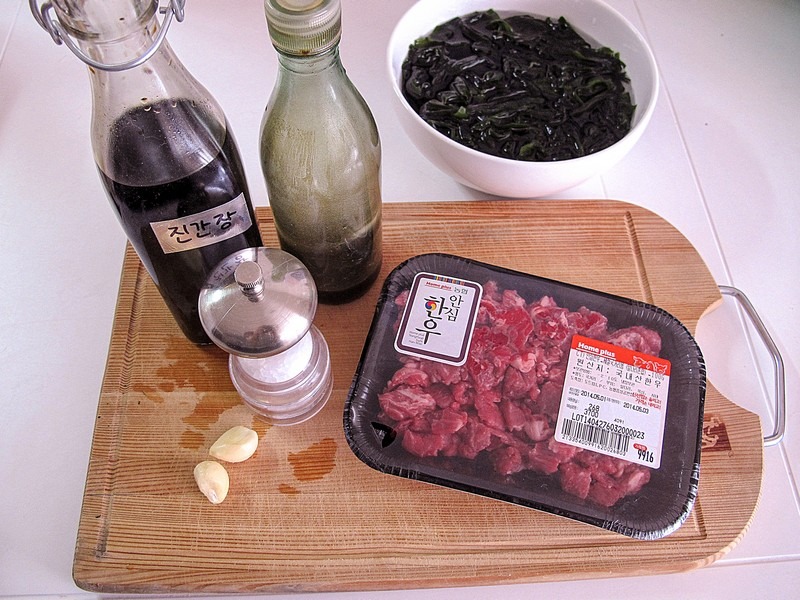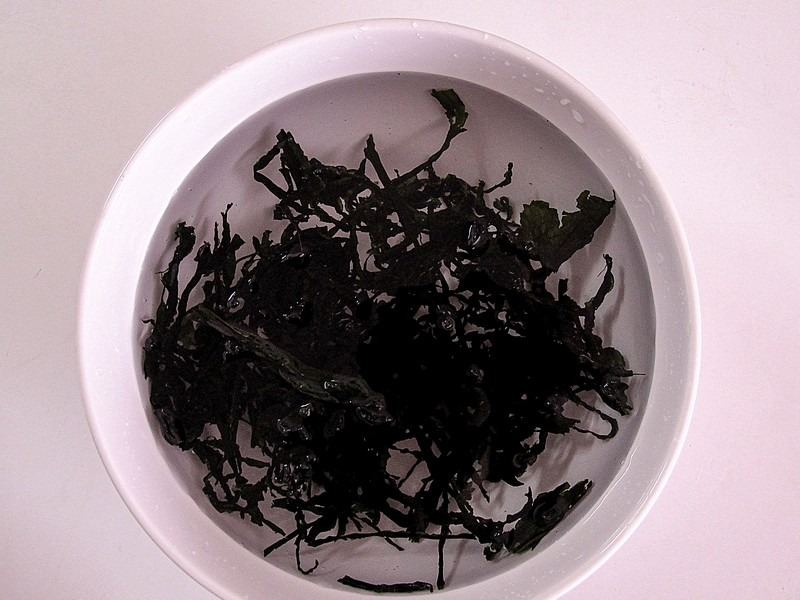Korean Cooking: How to make Korean Seaweed Soup
Last Updated on October 16, 2023
Known as the birthday soup in Korea, though it can be eaten any old time, miyeok-guk (미역국), or seaweed soup, is one of my favorite Korean soups. Seaweed soup is a household staple but it’s also a great restaurant option too. I had it every day for every meal when I was staying at a post-natal hotel in Seoul. If you want to make your own seaweed soup Korean style, follow the recipe below. This is my go-to meal when I’m feeling low on energy. It’s the pick-me-up I need.

(This post contains affiliate links, which means I receive a certain percentage of a sale if you purchase after clicking at no cost to you. Thank you for your support.)
What to know about Korean seaweed soup
Seaweed soup is often eaten on birthdays which came about because pregnant women eat a lot of this soup after giving birth. This tradition is said to have started during the Goryeo Dynasty when people noted that whales were eating the seaweed after giving birth.
The soup is full of calcium and iodine, both of which aid nursing mothers as well as fiber, omega acids and vitamin B1 and B3. It helps to regulate metabolism, purify the blood, relieve constipation, detoxify and aid in anti-aging. If the health benefits aren’t enough, it is also said that eating this soup on your birthday brings good fortune for the coming year.

Ingredients
- 15 grams Dried Seaweed
- 135 grams Cubed Beef for stew
- 2 Tsp. Sesame Oil
- 2 Cloves of Sliced Garlic
- 4 Tbs. Soup Soy Sauce
- Salt
Note: There is regular soy sauce and there is soup soy sauce, and I picked up the wrong one for the photo, but I used the correct when when cooking.

What to know about preparing seaweed
When I endeavored to start learning how to cook Korean style, miyeokguk (미역국), or seaweed soup, was actually the first thing I tried. But even with three main ingredients, it overwhelmed me. There’s a lot to know about seaweed.
If you want to learn more about Korean laver, check out this post on the Korean gim. All I’ll say is that I didn’t grow up eating seaweed, after all I lived in Ohio so there wasn’t really that much seaweed just floating around anyway, and the recipe I chose to use at the time didn’t tell me some basic things about seaweed as it apparently assumed that I knew everything about the green stuff.

The first thing this particularly terrible recipe refrained from telling me was that I needed to soak the seaweed before I actually put it in the soup. It also did not explain that dry seaweed is one size and it grows into much much more once it gets wet. It told me to use one cup and I followed directions and measured out one cup of dried seaweed, which turned into about four cups when all said and done. Basically, my husband swooped in and saved my soup that day.
Finally deciding to try again, I did not look up any recipes this time to compare, but chose to learn straight from my husband since the way he makes it is the way I like it. Seaweed soup is one of those soups that is really quite important to learn how to make because it’s enjoyed every birthday and is especially important for women during their post-partum period as well as a baby’s first birthday ceremony.
Directions
1. Remove the dried seaweed from the package and place it in a bowl. Cover the seaweed with water and let it soak for 20 to 30 minutes.


2. Get your hands wet! Check to see that all of the seaweed has gotten soft and there is no more dried seaweed in the bowl. Pour out the water and rinse the seaweed.

3. Cut the seaweed into smaller easier to bite pieces if they’re pretty long and set the seaweed aside.

4. Heat the sesame oil in a pot and add the beef to sauté for a few minutes.

5. When the beef is almost cooked through, add the seaweed to the pot. Turn up the heat and stir continuously for 2 to 3 minutes so that the seaweed doesn’t burn to the pan.

6. Add 8 cups of water to the pot.

7. Add the diced garlic to the pot and bring the soup to a boil and let it simmer for 8 to 10 minutes.

8. Add the soy sauce. Remember that soy sauce affects the darkness of the broth and adds salt, so if you want less sodium in your soup, add less soy sauce. Many Korean soups are on the saltier side but they’re eaten with rice to offset that. If you’re not to be dining with rice, don’t add as much soy sauce. You can add salt at the end if you want it a bit saltier.

9. The soup is usually eaten with rice and Korean side dishes. This recipe feeds two hungry people, or three people if there is rice and other food on the table. Enjoy!
Did you like this post? Pin It!




2 Comments
Jacob Fields
Please include a print option for your articles so I can print your recipes.
Hallie Bradley
Ah, thank you for the suggestion. I’ll look into adding something. Hope you got to make the soup. It’s my favorite. ^^